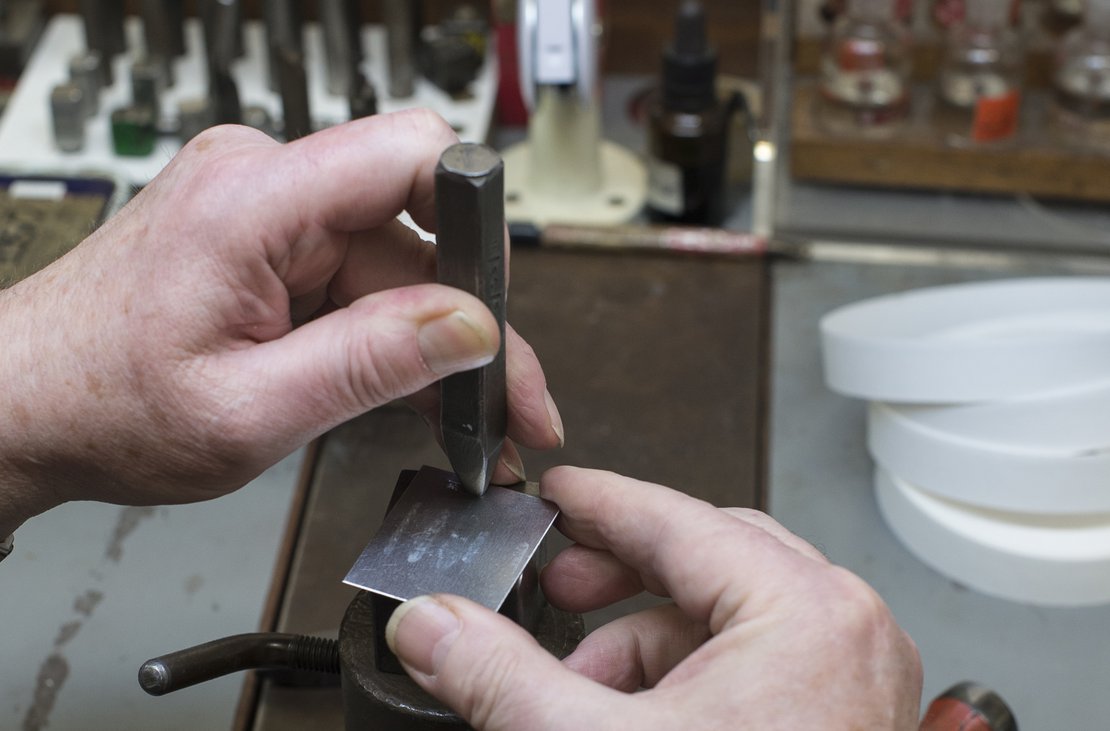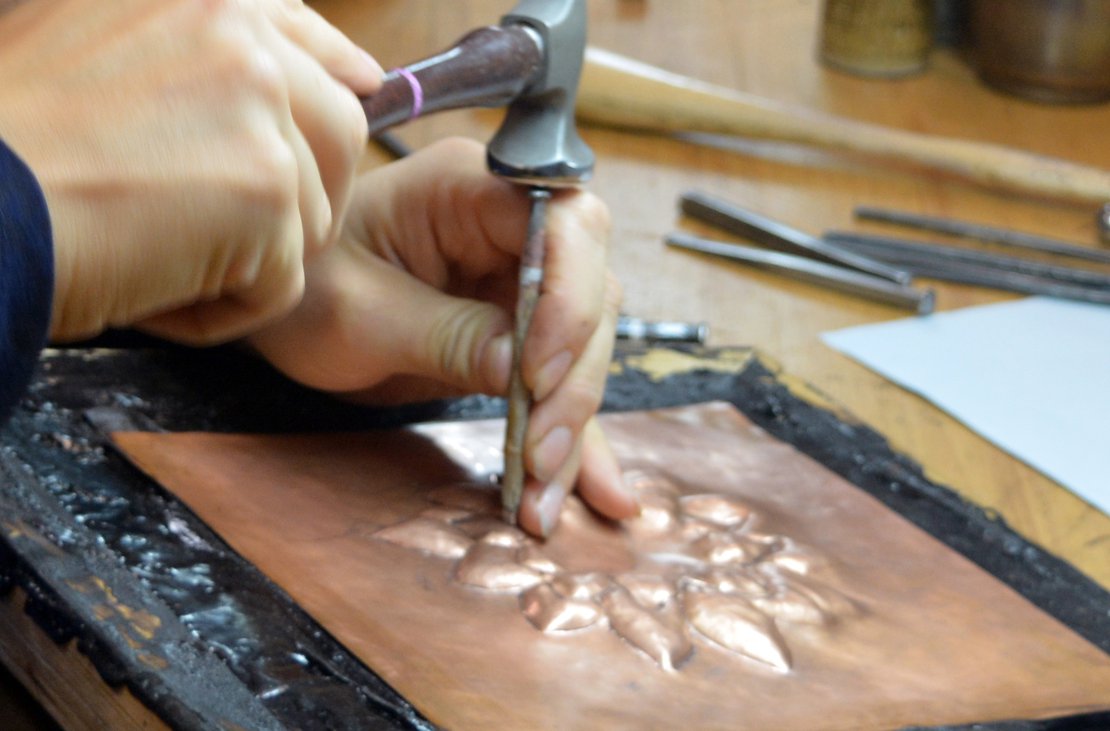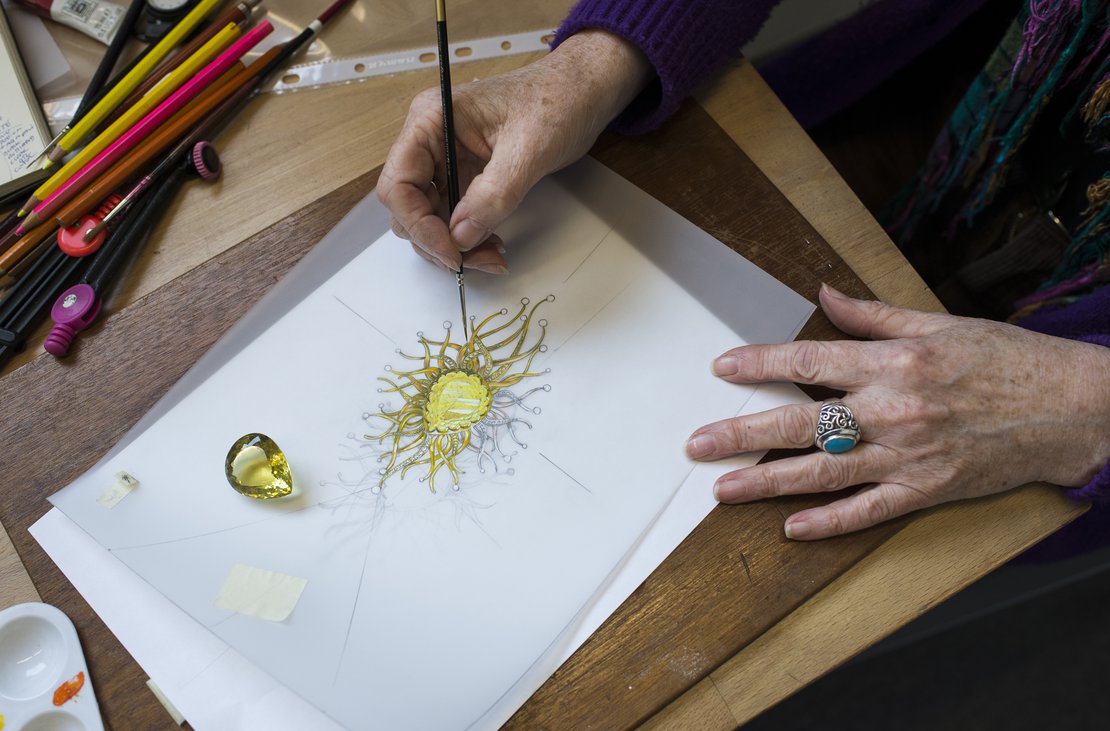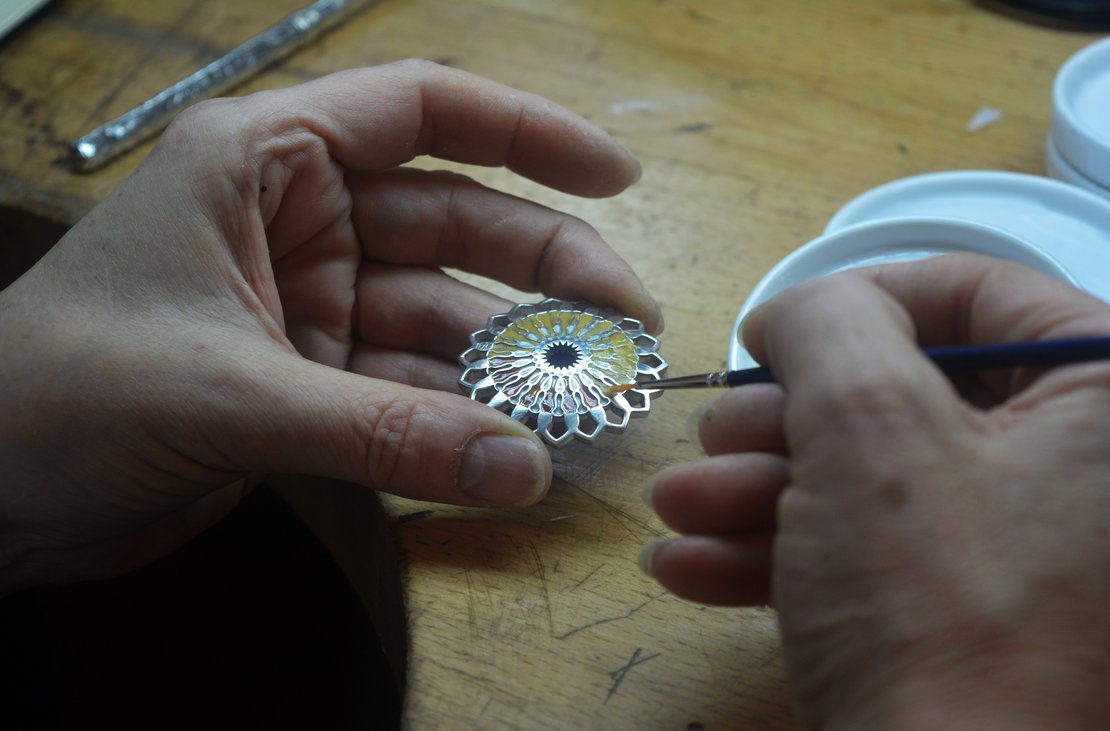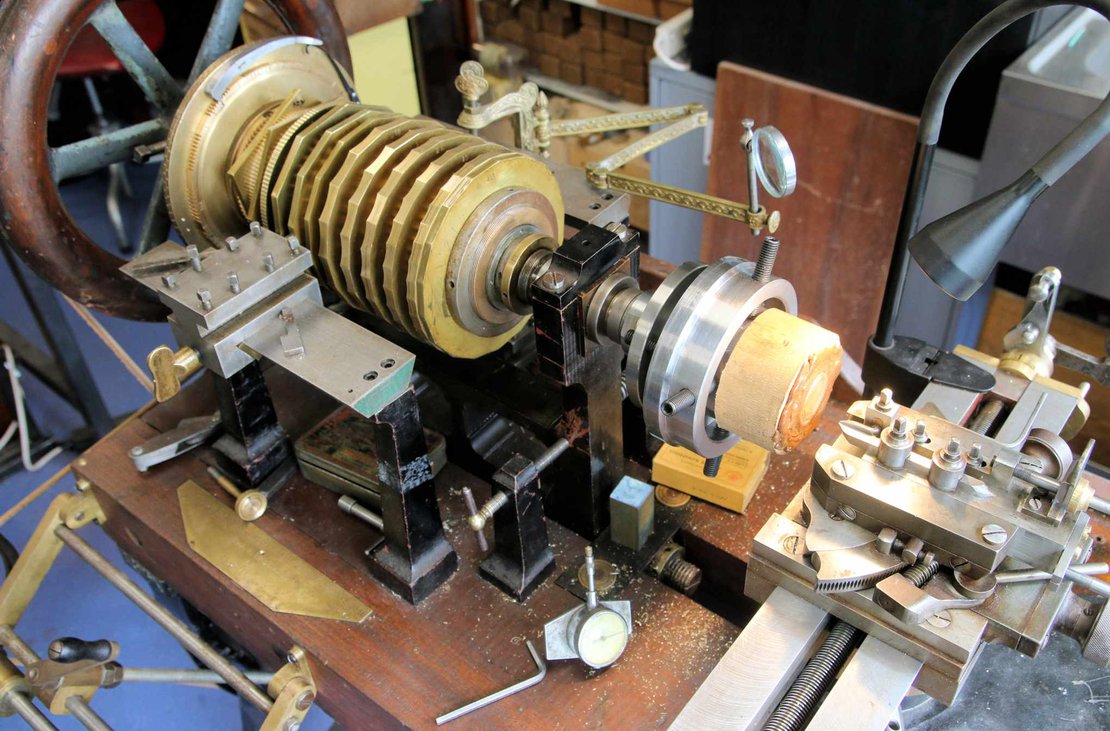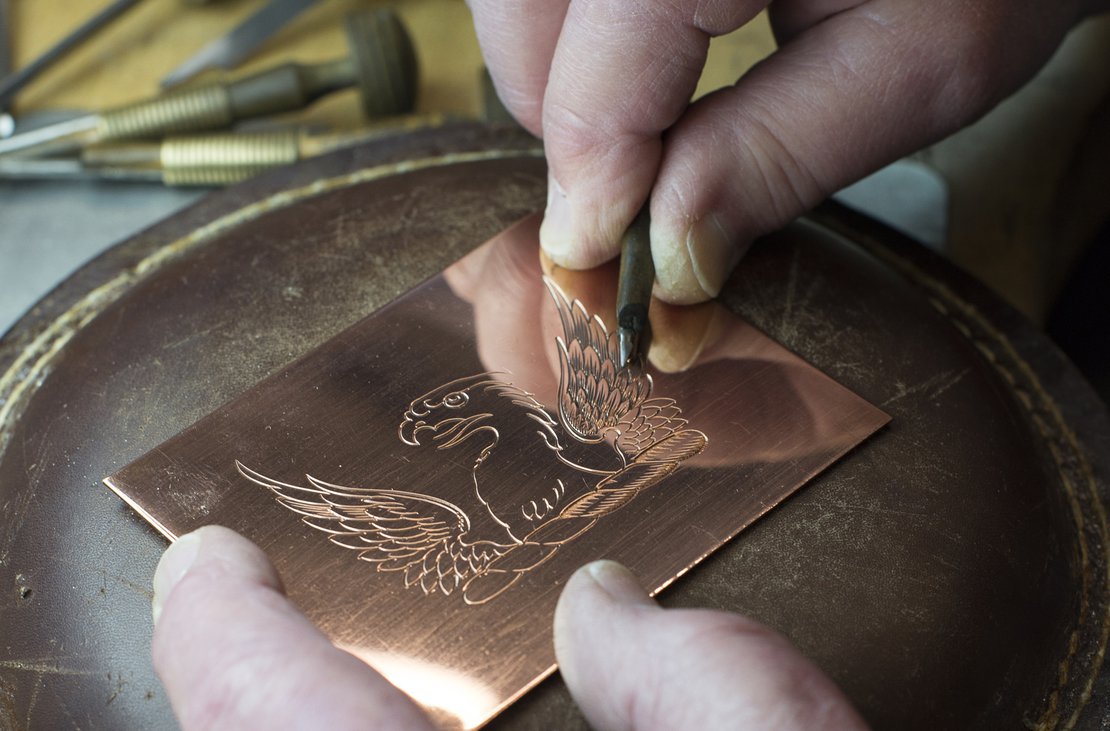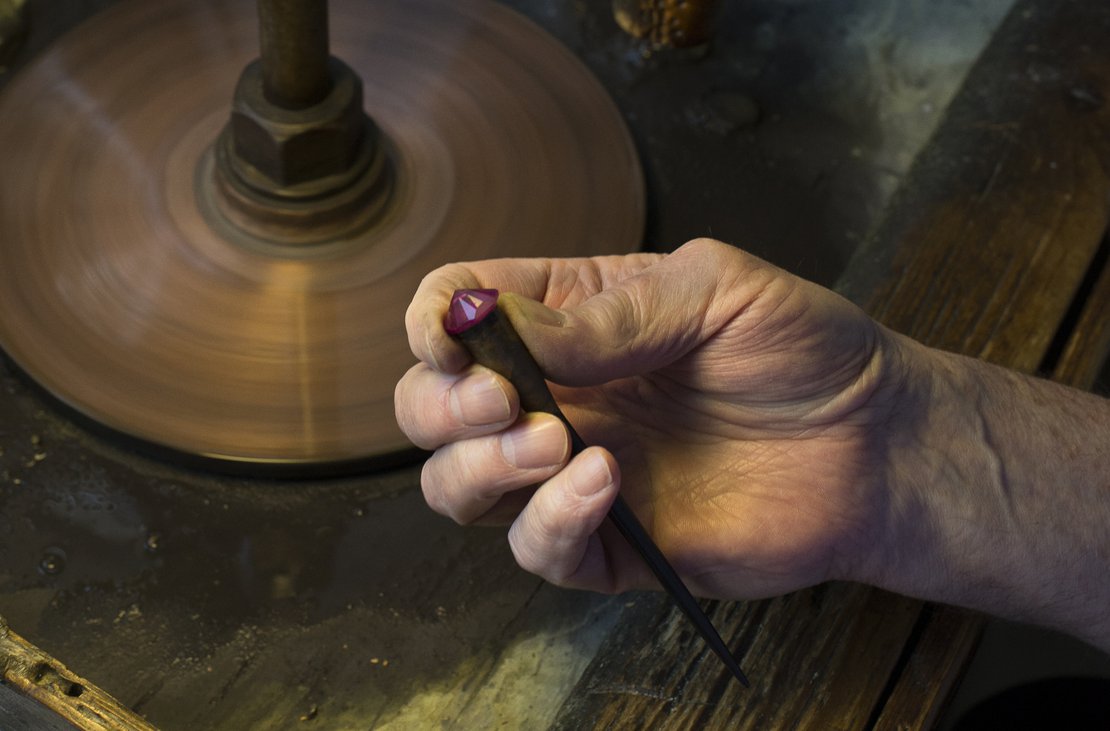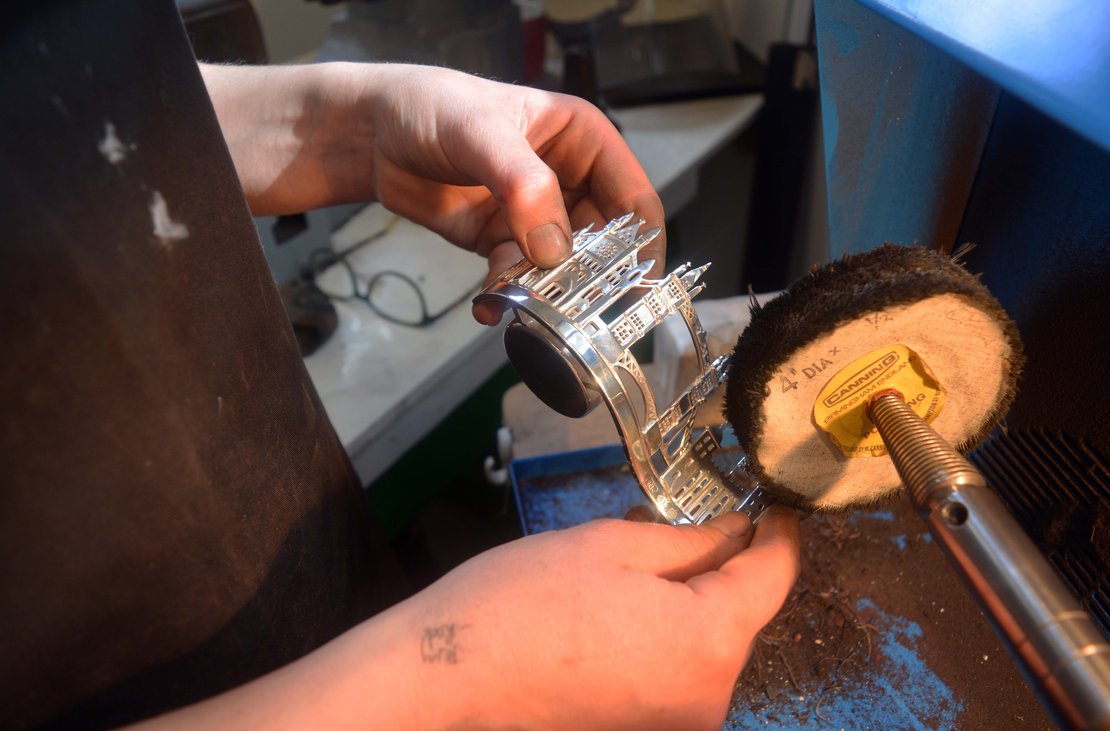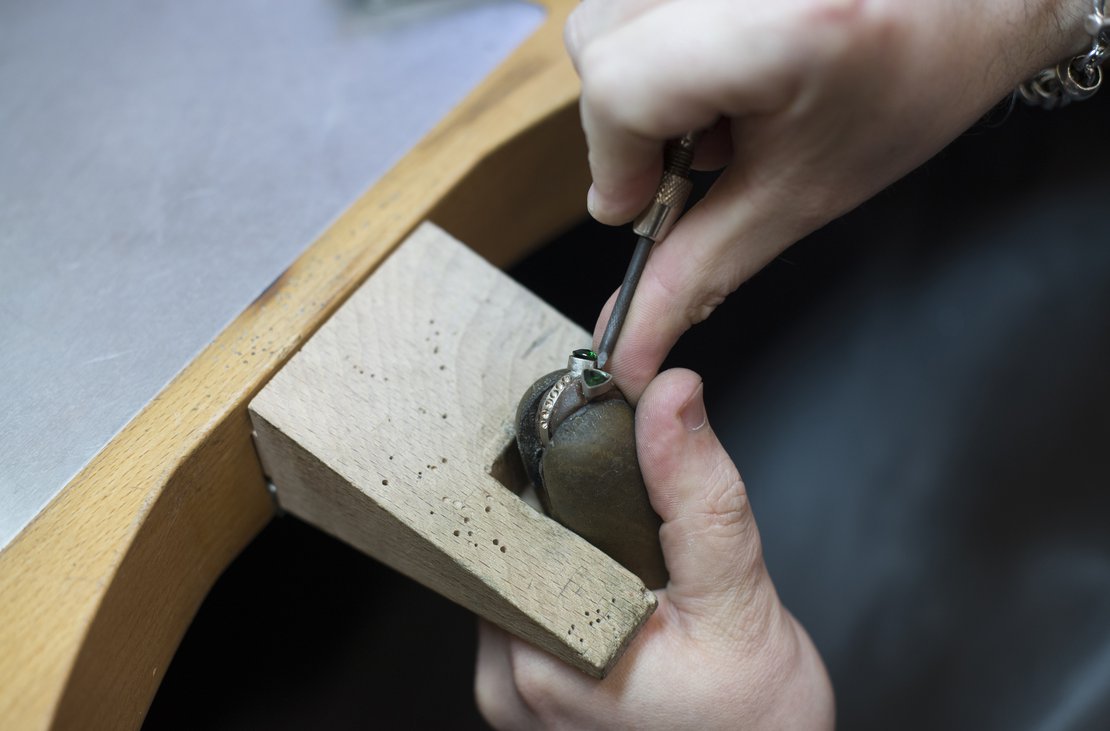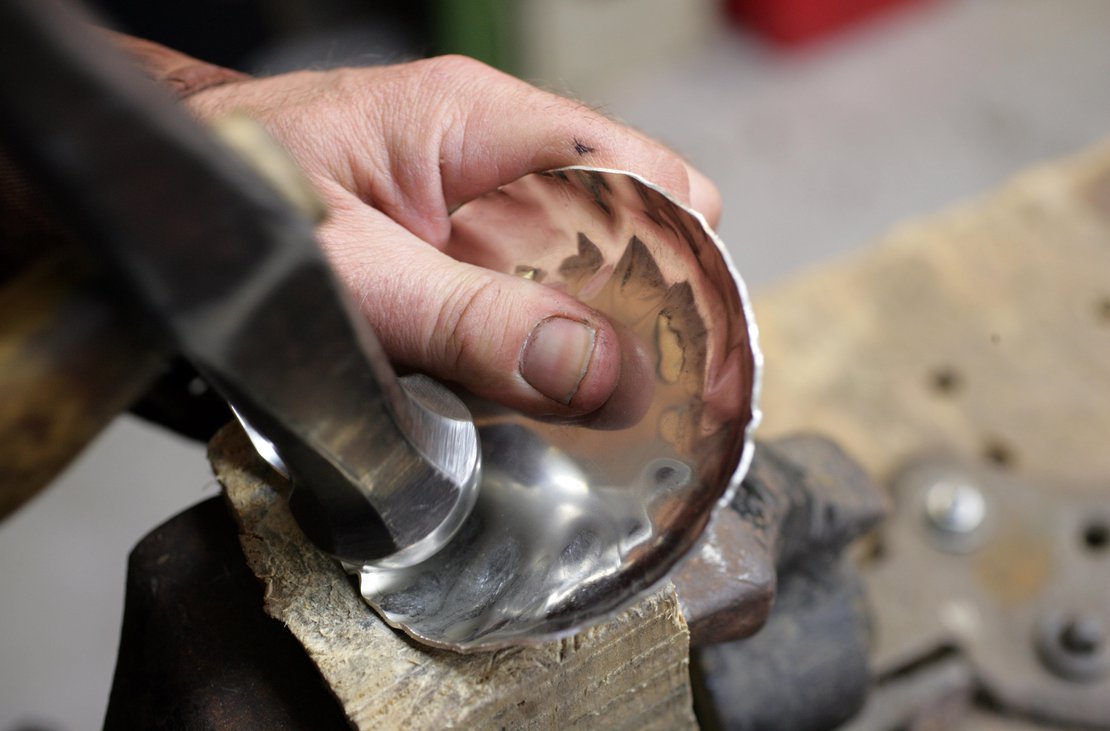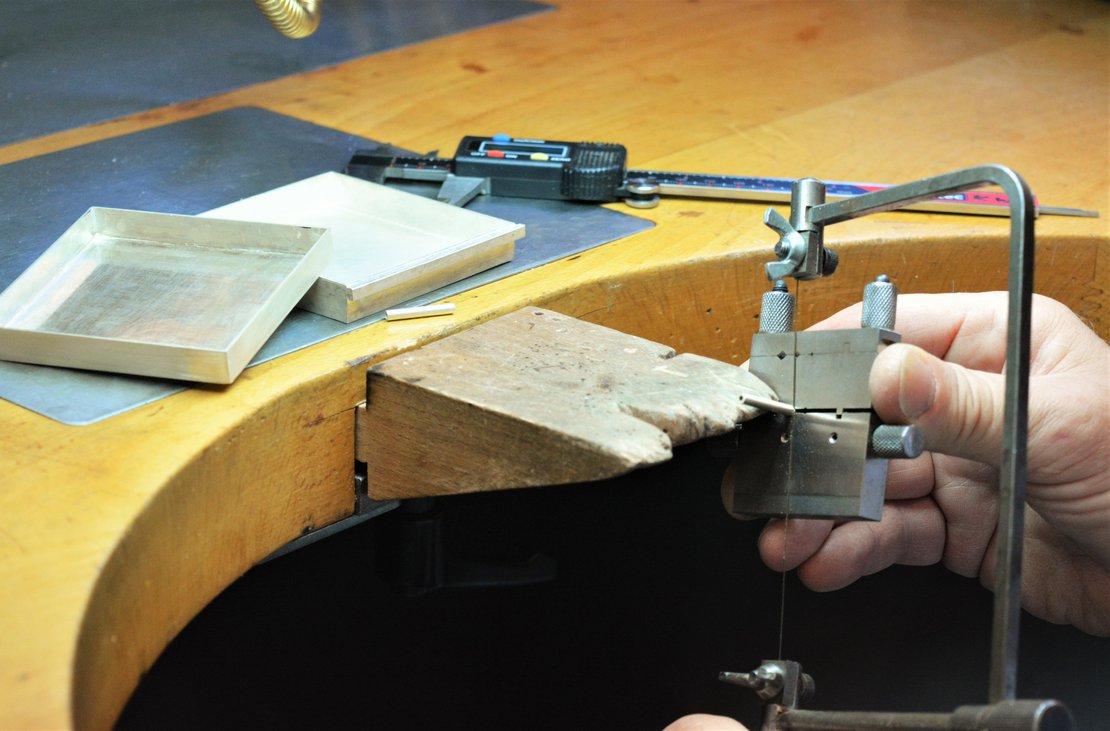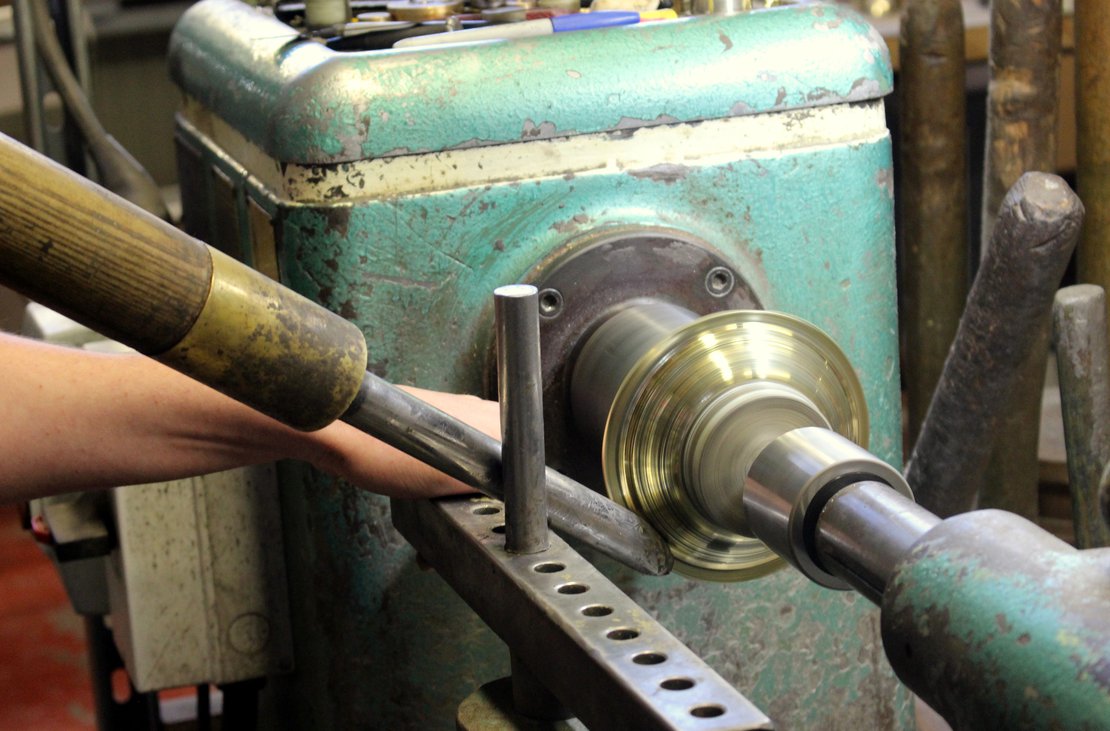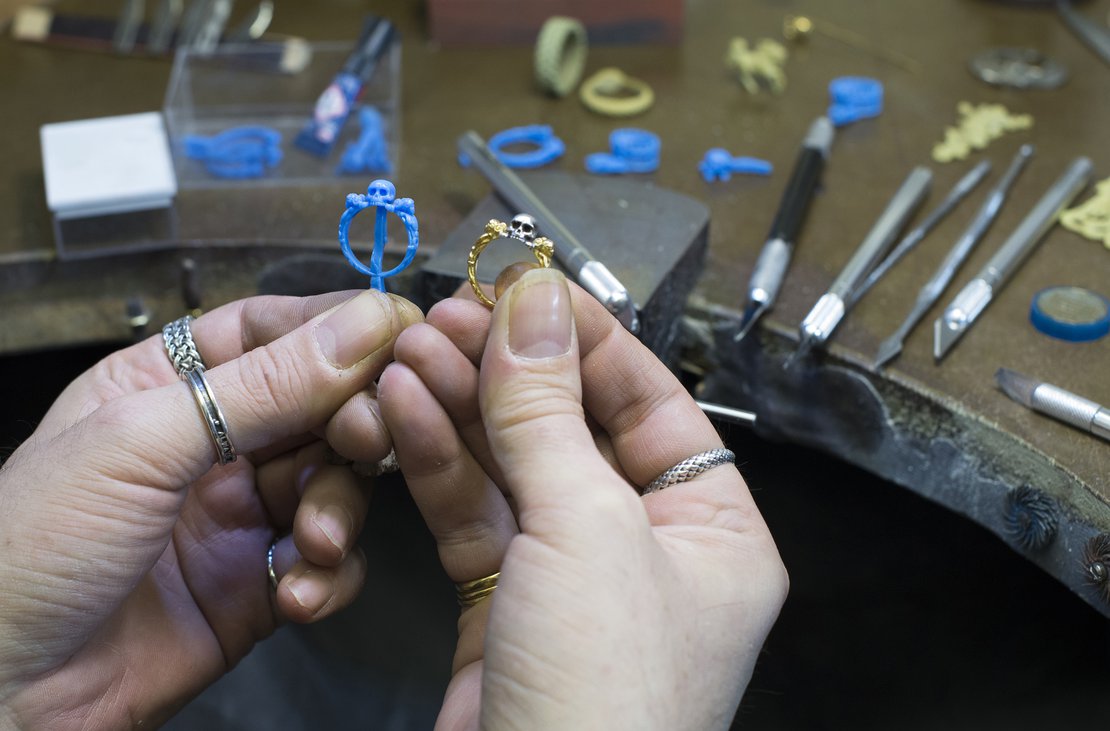Diamond Mounter (Jeweller)
Diamond mounters are specialist jewellers who make the framework in which diamonds or gem stones can be set.
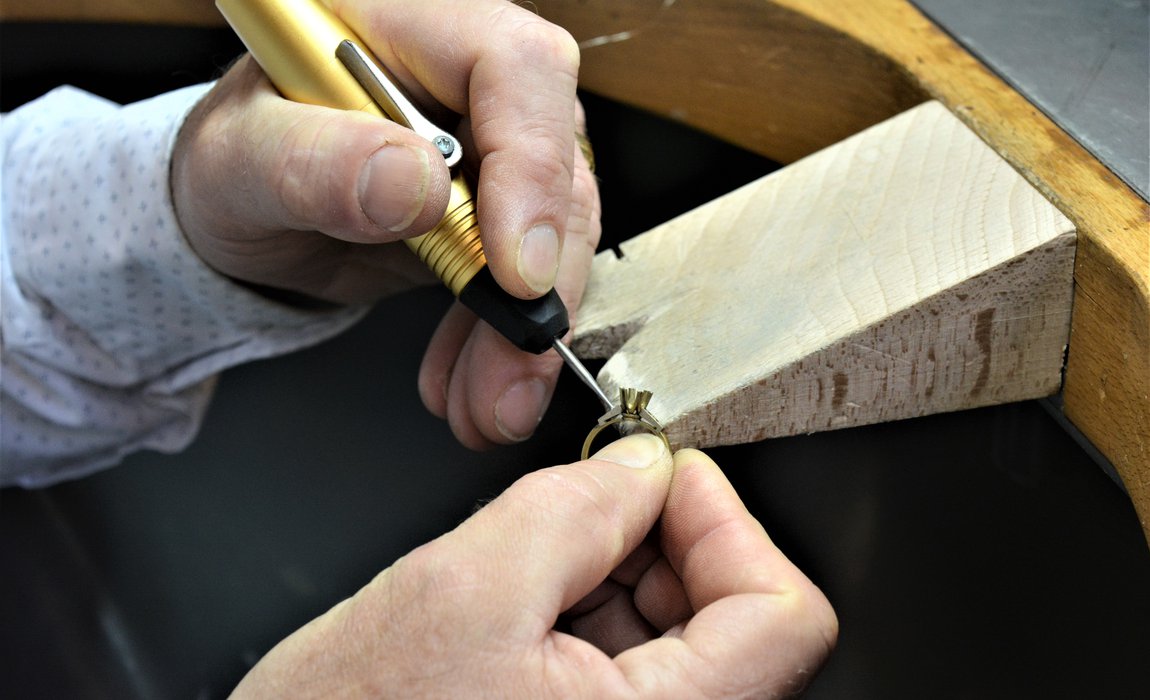
The mounter creates a piece, typically in gold, silver or platinum , which is suitable for the gem setter to set the stone(s) in. The mount needs to hold the stone(s) securely while showing them off.
“The 1948 De Beers ‘a diamond is forever’ campaign invented the modern-day engagement ring. Before the campaign’s debut, proposing to your partner with a diamond was not standard.”
What personal attributes are useful for a diamond mounter?
To be a diamond mounter you need to be:
- Interested in jewellery
- Good at working with your hands
- Able to work in small scale
- Patient and methodical, precise and accurate
- Comfortable working with an open flame
- Trustworthy and reliable – you will be dealing with expensive material
- Able to follow instructions from plans – especially if you work for a jeweller’s shop or jewellery workshop
- Able to communicate your ideas and requirements
Highly skilled diamond mounters will also have an understanding of how to set stones. In some cases, the gemstones or diamonds are chosen first and the mount is made to fit and in other cases the mount is made before the gem is chosen or cut to fit. Some exceptional diamond mounters have a background in gemmology. They will also spend time studying work by other craftspeople and historic examples in museums or galleries.
What will my working life be like as a diamond mounter?
A diamond mounter will work from a work bench in a studio or workshop. As a diamond mounter you may be working for a jewellery company or be self-employed and create mounts for other jewellers, designers or jewellery companies. If you work for a company you are part of a bigger team, earn a wage and have a fixed working schedule normally from Monday to Friday.
If you are self-employed you may have a workshop at home or shared with other craftspeople. You are also more likely to engage with customers to create bespoke pieces or you might be approached by a company or an individual to create their designs. Alternatively, you might decide to design and sell your pieces. Designer-makers can either sell their pieces through a gallery or retail space or you might decide to sell them directly to customers at craft fairs for example. In this case you will need to develop good business, finance, marketing and interpersonal skills.
Within your work you will need to adhere to industry health and safety requirements; know how to safely store, handle and dispose of chemicals; know how to safely operate and maintain your machines and tools; and learn how to process precious metals, their alloys and solders. You will find it useful to maintain a working knowledge of the risks involved in using natural gas and oxygen-propane gas torches, acids and chemical products; and of the properties of diamonds and common gemstones.
As a diamond mounter you will use skills and manufacturing techniques including interpreting and executing working drawings, sawing, filing, doming and stamping hollow forms, forging, bending and forming wires and strip, rolling and drawing wires, soldering, manufacture of gallery and edging work, manufacture of different types of settings from sheet and wire, assembly-work, finishing and polishing.
You can expect to work with all carats of gold, platinum, silver, solder and alloying to produce your own solders. And you will learn how to use hand tools including files, hammers, pliers, measuring and marking tools, saw frame and blades, a bench peg, soldering equipment, personal protective equipment, drills, burrs and gravers. You should receive training in all of these, as required.
A day in the life of a diamond mounter - Alex Wood
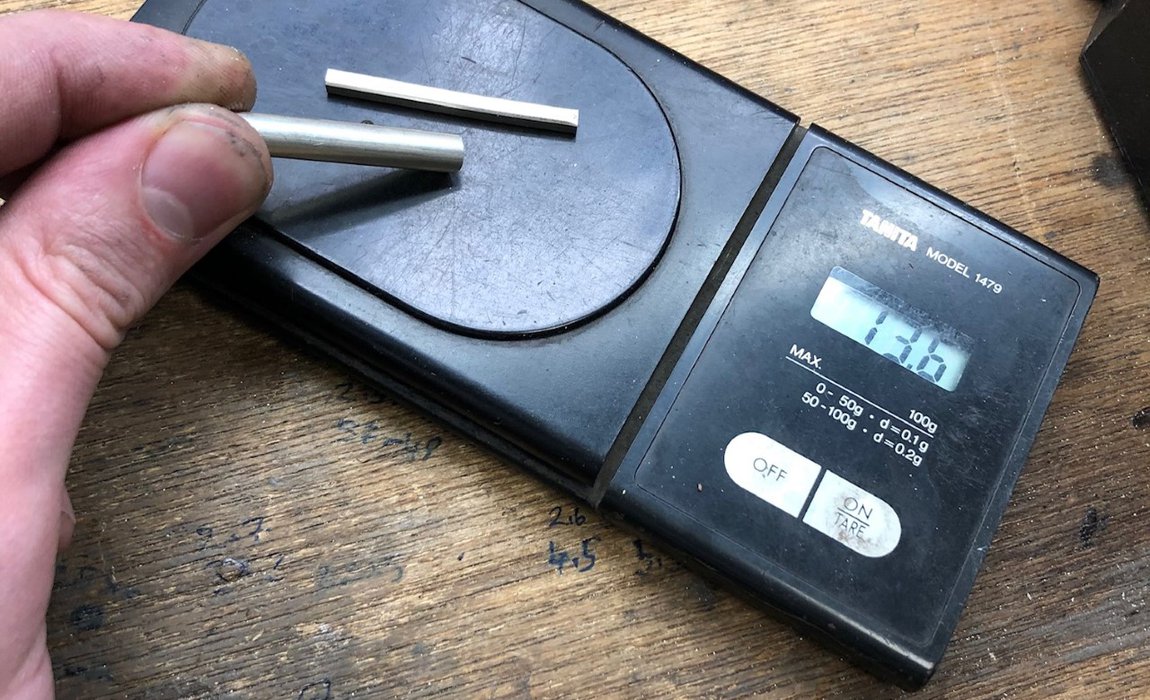 Weighing in metal.
Weighing in metal.
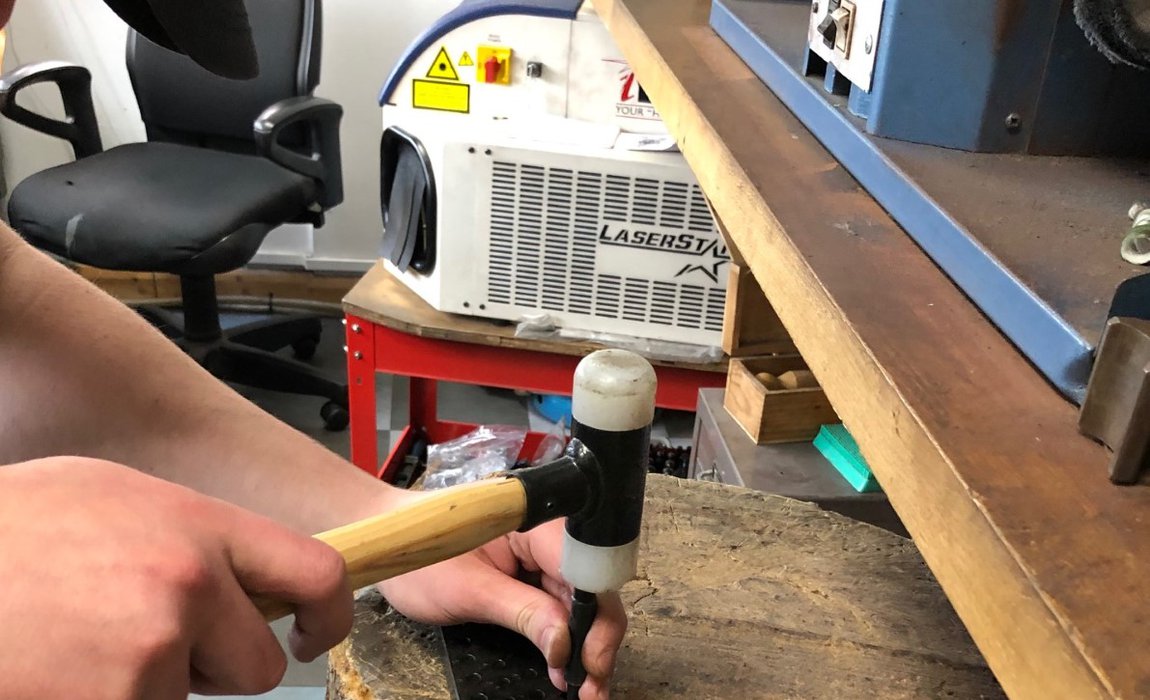 Forming the initial shape.
Forming the initial shape.
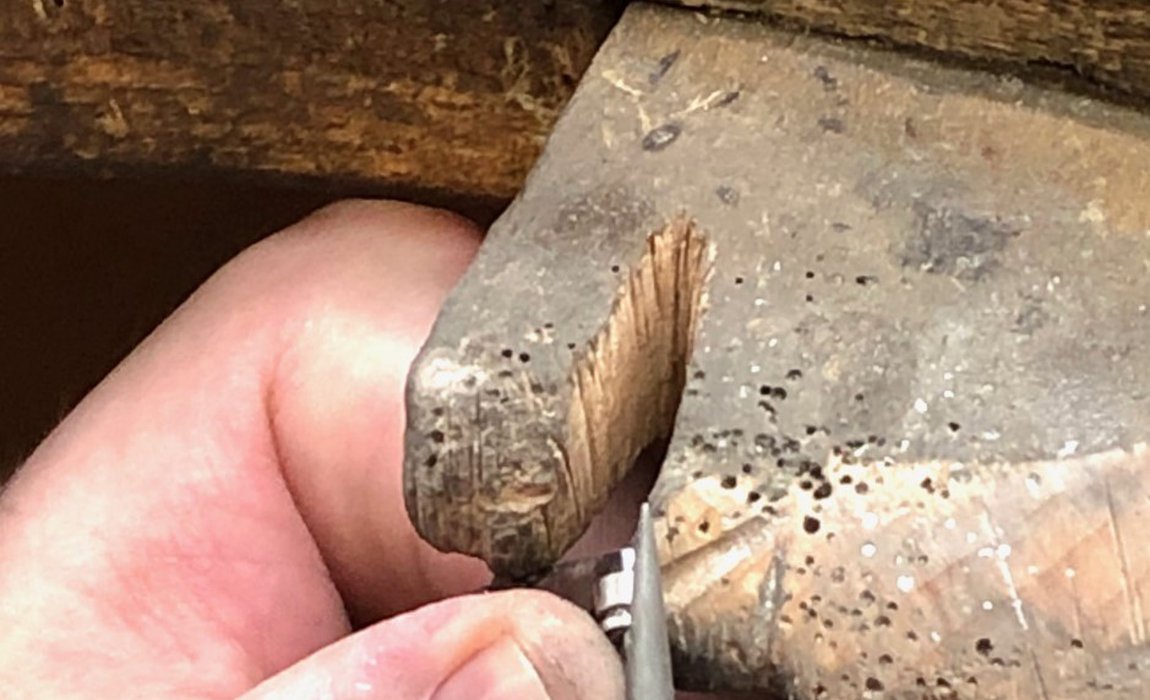 Filing.
Filing.
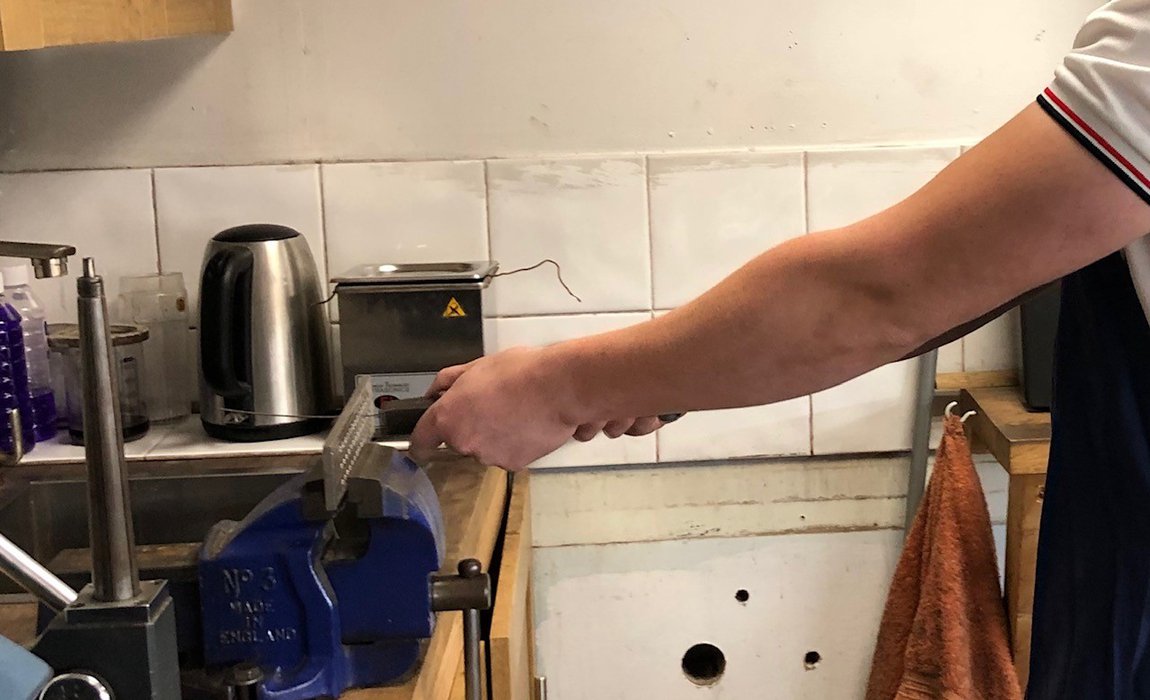 Pulling down wire.
Pulling down wire.
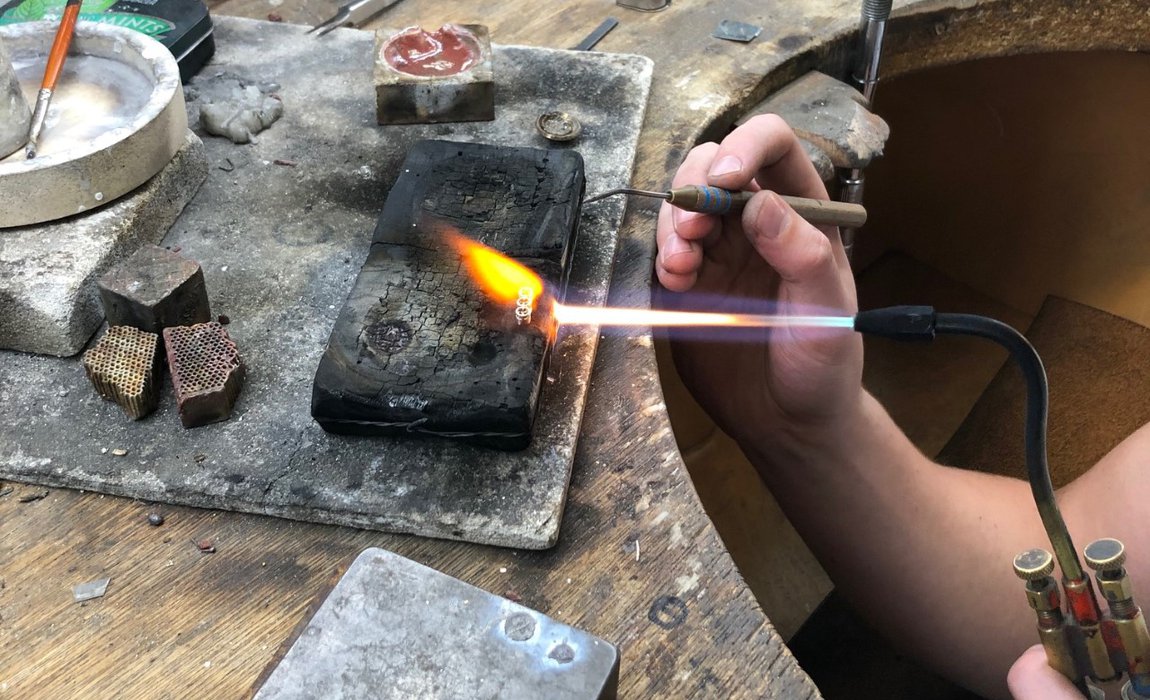 Soldering.
Soldering.
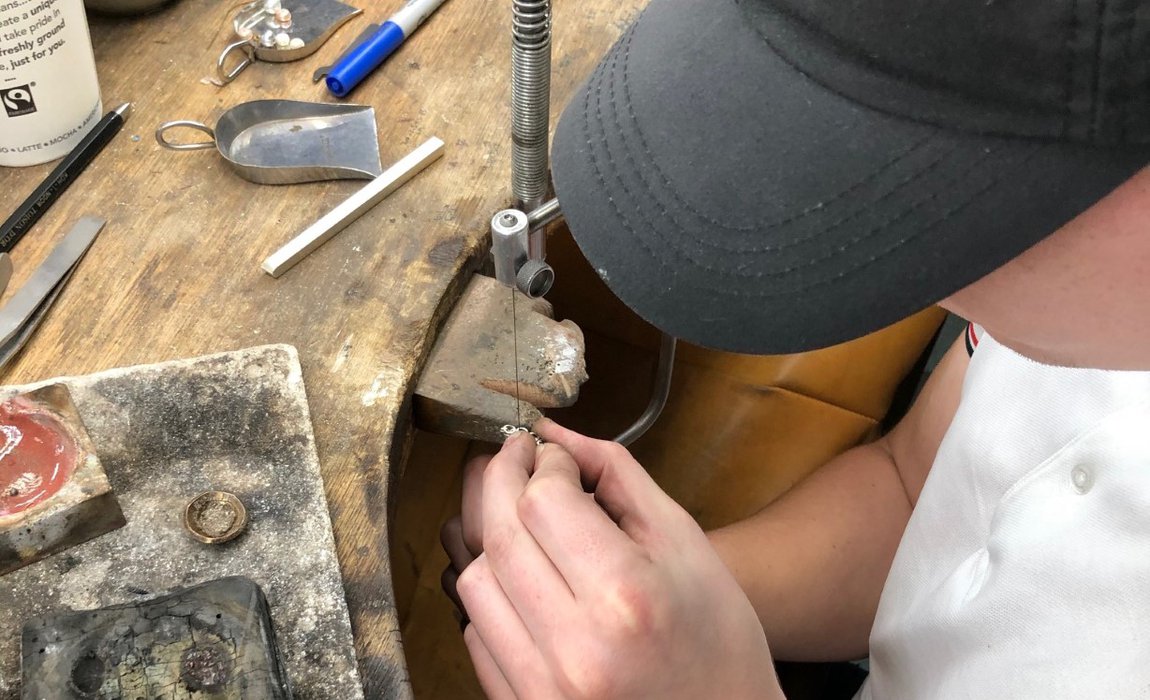 Sawing.
Sawing.
Training or qualifications: How can I become a diamond mounter?
There are no specific qualifications to become a diamond mounter. Typically, diamond mounters will pursue an apprenticeship. However, the techniques are also covered in a general jewellery course which can be studied at different levels. Practical training is essential whether you complete an apprenticeship or a degree course.
There are several ways to start out in the jewellery, silversmithing and allied industries. To become trained as a diamond mounter you may choose to go straight into a job, apprenticeship or relevant course at a college, university or training centre. There are very few skill-specific qualifications available, but many courses provide an introduction to a range of creative skills. To find out more about different options and your potential route into a creative career within the goldsmithing industry click here.
What can I earn as a diamond mounter?
As an apprentice or someone who is training you should be paid at least the National Minimum Wage for your age and this rate should increase as you get closer to completing your training. Apprentices undertaking traditional training may start out earning around £12,000 – £13,000 per year and be closer to £17,000 – £18,000 at the end of their four-year apprenticeship. Once you have completed your training your earnings will vary depending on your skill and employment status.
Diamond mounting is one of the most common jobs within goldsmithing and there is a constant demand for high-quality mounters within the UK industry. As a diamond mounter you may become a pattern maker, specialise in assembly work or fine jewellery. Wages will increase across these different areas with fine jewellers being paid the highest.
Salaries for a diamond mounter specialising in pattern making can start at around £22,000 - £25,000 per year in the first few years after training. This can rise to £35,000 for mid-career mounters and can reach up to £45,000 for the most experienced and skilled pattern makers. Pattern makers may work for a company or run your own business.
If you specialise in assembly work, you are more likely to be employed by a company or work as an outworker for trade rather than public clients. Salaries for assembly work can start at around £22,000 - £25,000 per year in the first few years after training. This can rise to £40,000 for mid-career mounters and can reach up to £50,000 for the most experienced and skilled assembly mounters.
Diamond mounters who specialise in fine jewellery can expect to earn the highest wage starting at around £22,000 - £25,000 per year in the first few years after training. This can rise to £45,000 for mid-career mounters and can reach up to £90,000 for the most experienced and skilled fine jewellery diamond mounters working for a high-end fine jewellery company.
If you are self-employed, being a diamond mounter can be well paid if you have regular clients or constant sources of work, but it can be difficult if you are commissioned ad hoc. Self-employed diamond mounters often agree a fee per job, per hour or per day. Rates for this will depend on your experience, the materials being used and the type or complexity of the piece. No matter how you work your reputation is extremely important as the goldsmithing industry often operates on word of mouth recommendations and trust.
What industry membership bodies can I join?
offer a range of membership options for people at different stages of their career. Joining a membership body or keeping up to date with industry events allows you to create a network with like-minded individuals. Keeping up to date with hallmarking legislation will be useful if you are interested in working for an Assay Office. See for example:
Society of Jewellery Historians
Meet the Makers
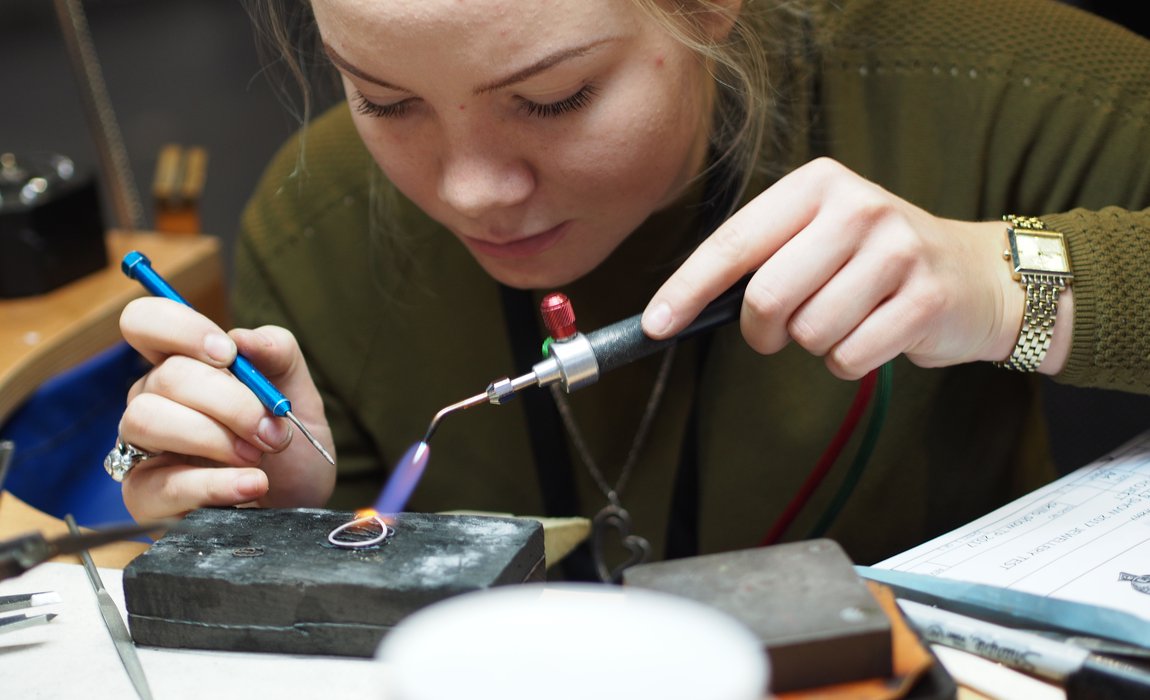
With diamond mounting, you pay attention to lots of really, really small details, like soldering tiny little things. You get to work with your hands, and gem stones are beautiful - so why wouldn’t you want to work with them!!
Adriana Klimentjevaite
Read our interview with diamond mounting apprentice, Adriana Klimentjevaite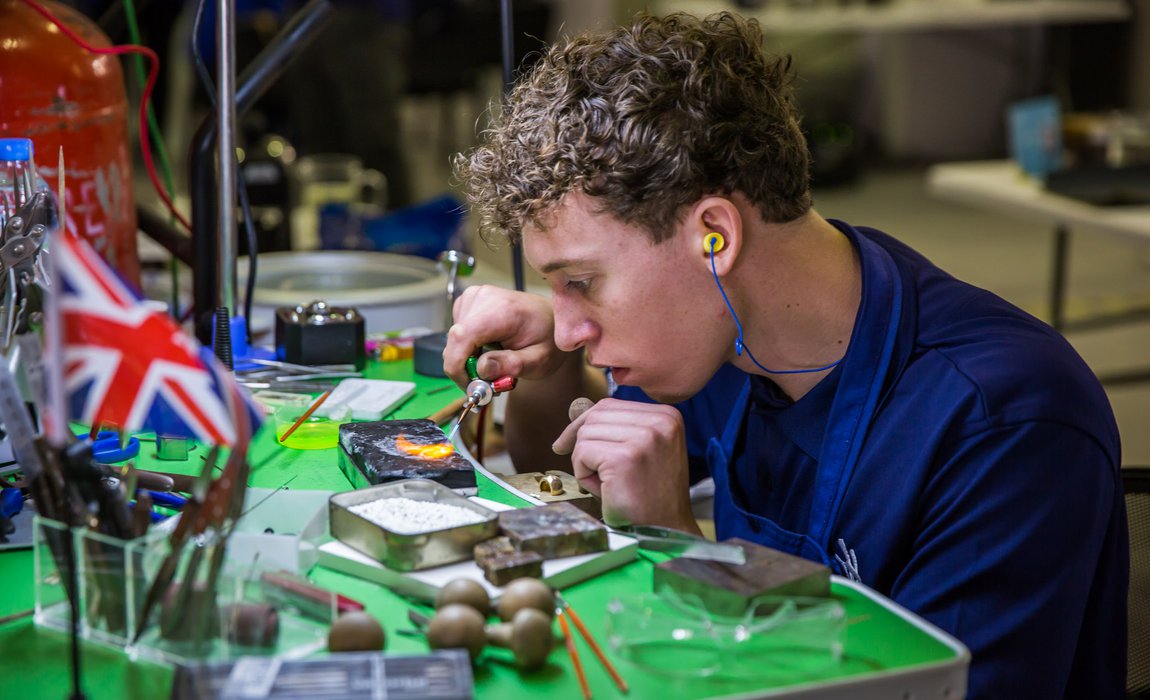
Everyday I get to create a piece of art which is completely different to the day before.
Examples of work
The Goldsmiths’ Company Collection includes over 8,000 pieces of antique, domestic & contemporary silver, jewellery and art medals which were made in Britain between 1350 and the present day. The Company continues to purchase, and commission pieces each year and new contemporary pieces must demonstrate innovative design combined with excellent craftsmanship. Pieces are acquired from both established craftspeople and rising stars.
The Goldsmiths’ Company also retains an image archive of Masterpieces created by apprentices in their final year on the Goldsmiths’ Company Apprenticeship Scheme. These pieces take around 350 hours to make and demonstrate the skills learnt throughout an apprentice’s training. A selection of these pieces, which demonstrate diamond mounting, can be seen here:
 Oliver Davies (Graff Diamonds Ltd), Butterfly Brooch © The Goldsmiths’ Company 2017
Oliver Davies (Graff Diamonds Ltd), Butterfly Brooch © The Goldsmiths’ Company 2017
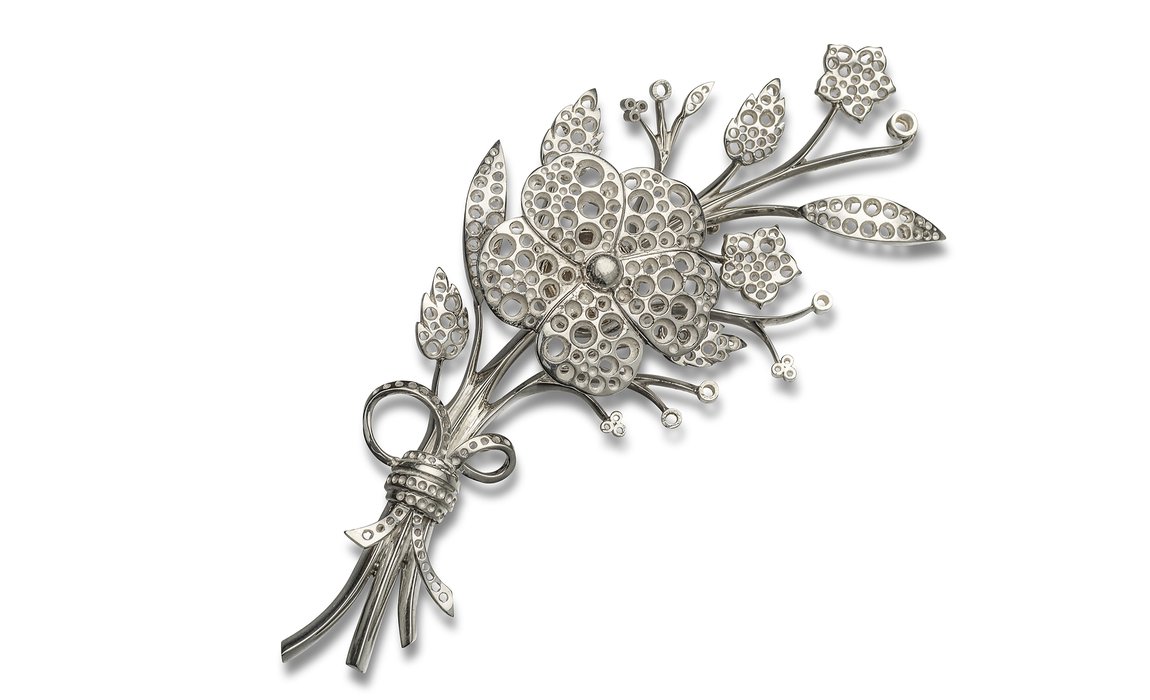 Jennifer Smith (Kata Wearable Arts), Floral Spray Brooch, © The Goldsmiths’ Company 2017.
Jennifer Smith (Kata Wearable Arts), Floral Spray Brooch, © The Goldsmiths’ Company 2017.
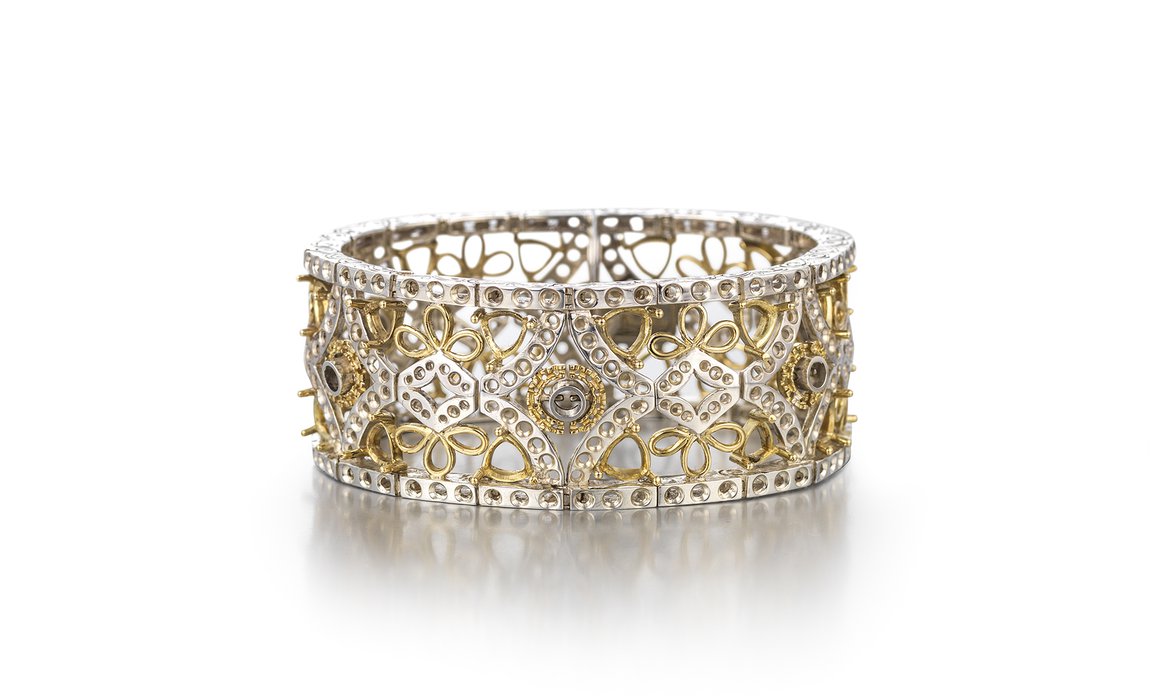 Abigail Buckingham (Andrew Buckingham Silversmiths), 18ct yellow gold and silver bracelet © The Goldsmiths’ Company 2017
Abigail Buckingham (Andrew Buckingham Silversmiths), 18ct yellow gold and silver bracelet © The Goldsmiths’ Company 2017
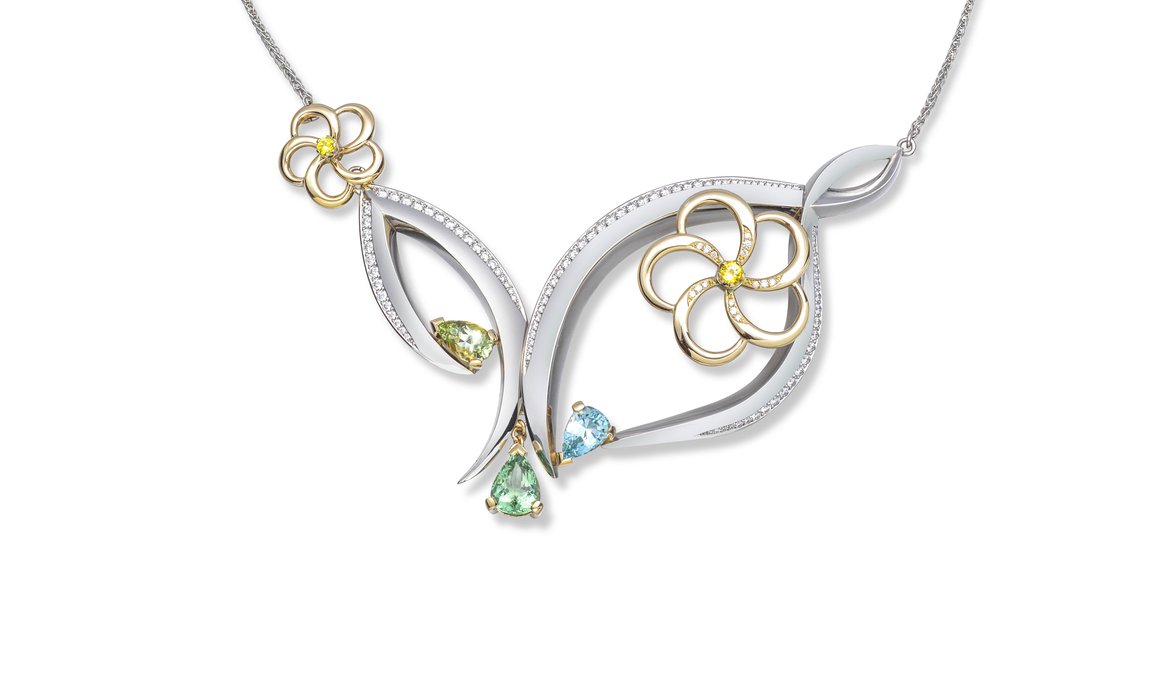 William Lander (Harriet Kelsall Jewellery Design Ltd) Primrose Inspired Necklace © The Goldsmiths’ Company 2018
William Lander (Harriet Kelsall Jewellery Design Ltd) Primrose Inspired Necklace © The Goldsmiths’ Company 2018
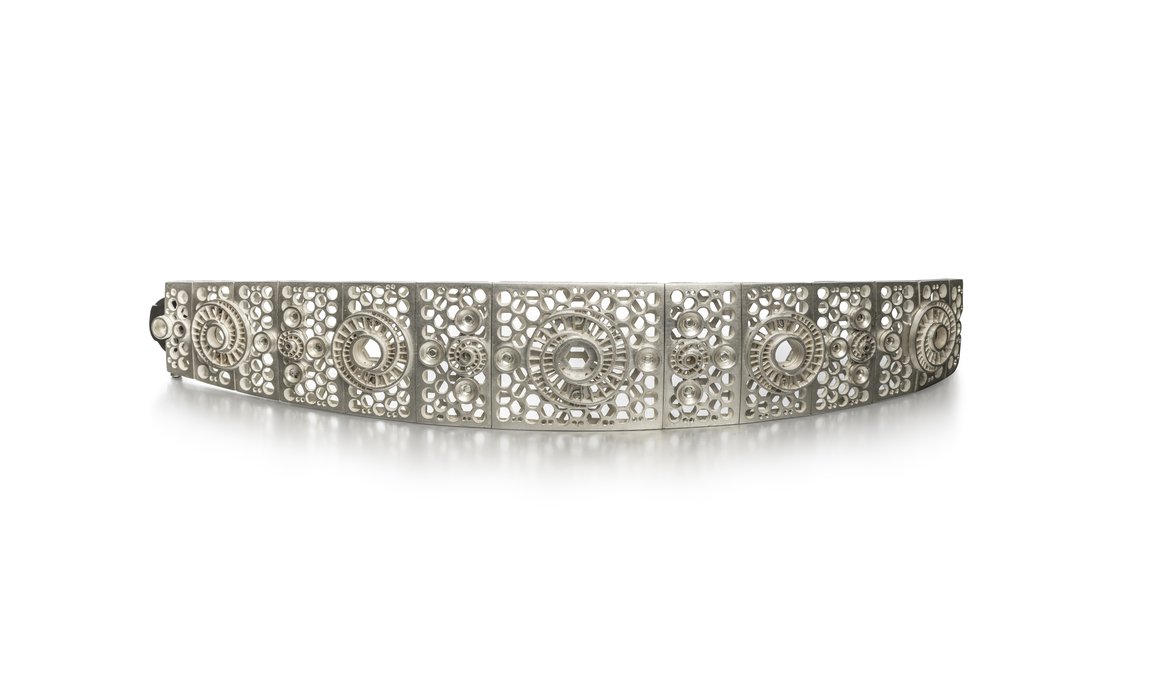 Eleanor Woolacott (Tony Wood, C A Treble) The Spiral Bracelet © The Goldsmiths’ Company 2018
Eleanor Woolacott (Tony Wood, C A Treble) The Spiral Bracelet © The Goldsmiths’ Company 2018
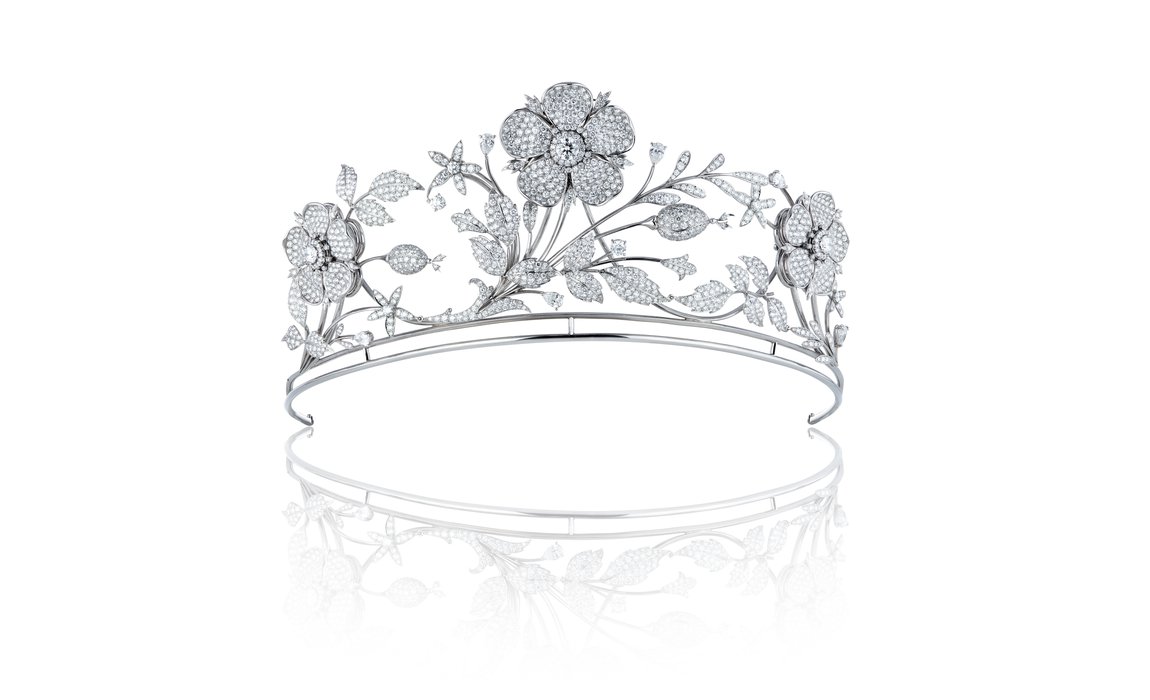 Chloe Lightfoot (Richard Cornelius, E Wolfe & Co) The Wolfe Rose Tiara - platinum & diamond © The Goldsmiths' Company 2018
Chloe Lightfoot (Richard Cornelius, E Wolfe & Co) The Wolfe Rose Tiara - platinum & diamond © The Goldsmiths' Company 2018
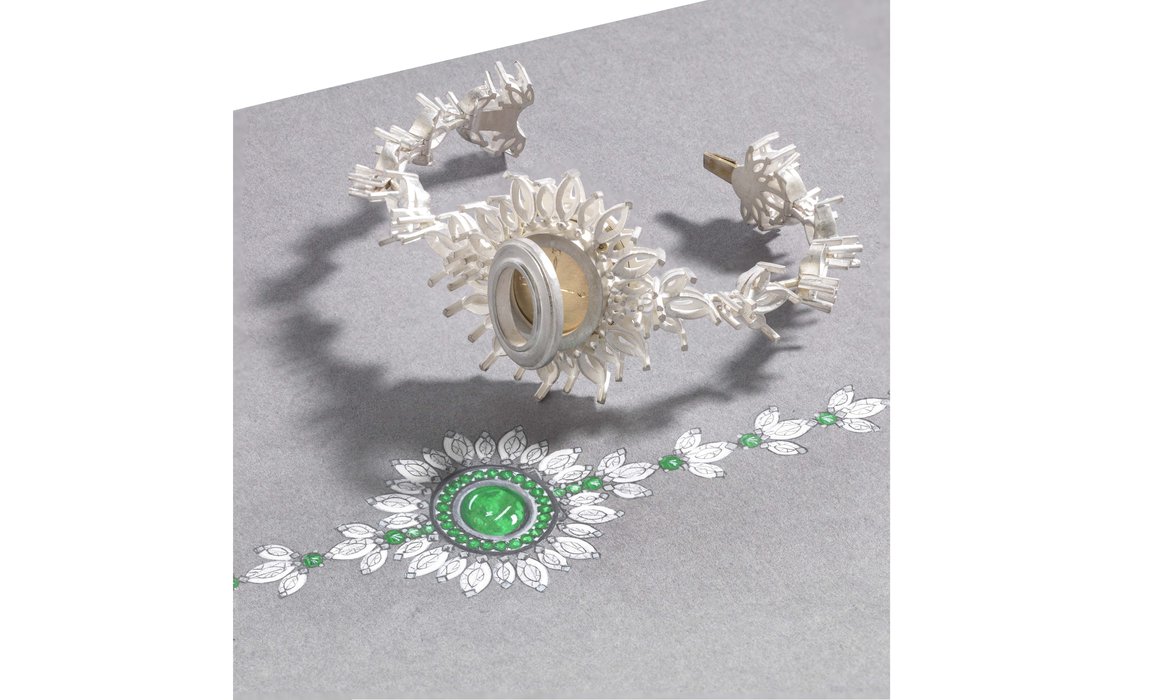 Ben Kerridge (Dominic Walmsley Jewellery) Snowdrop Watch © The Goldsmiths’ Company 2018
Ben Kerridge (Dominic Walmsley Jewellery) Snowdrop Watch © The Goldsmiths’ Company 2018
 Luiz Goncalves (David Marshall, The London Artworks Ltd) Carnical Dancing Lady © The Goldsmiths’ Company 2018
Luiz Goncalves (David Marshall, The London Artworks Ltd) Carnical Dancing Lady © The Goldsmiths’ Company 2018
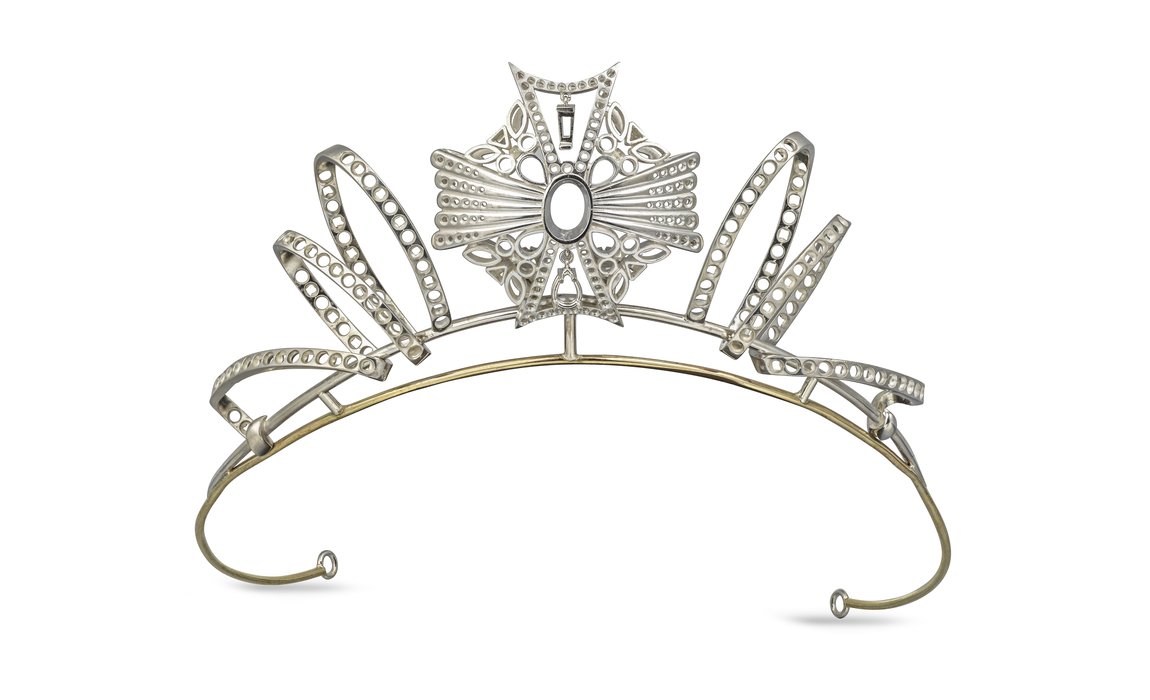 Callum Cooke (Robert Aylett, Robert Glenn Ltd) Silver Tiara © The Goldsmiths’ Company 2018
Callum Cooke (Robert Aylett, Robert Glenn Ltd) Silver Tiara © The Goldsmiths’ Company 2018
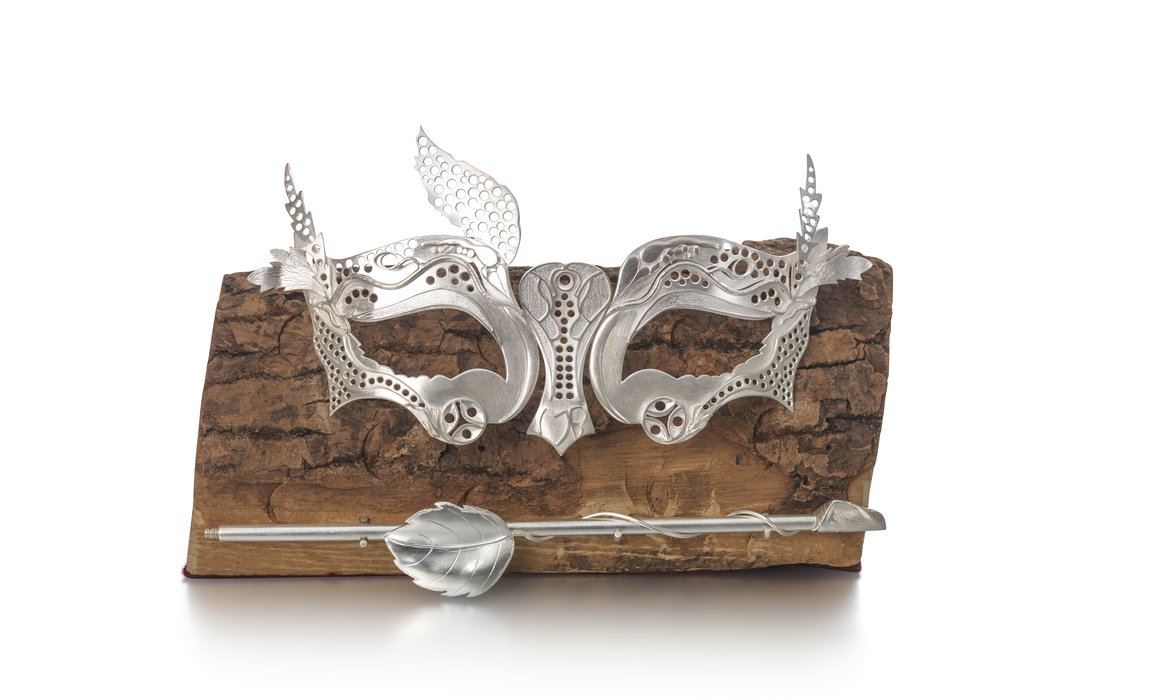 Luke Blackie (Mandos Demetriou, Mandos Jewellery) Mask of Mystery © The Goldsmiths’ Company 2018
Luke Blackie (Mandos Demetriou, Mandos Jewellery) Mask of Mystery © The Goldsmiths’ Company 2018
 Sharon Alvarez (Jos Skeates, E C One) Blossoming Petals - silver & gold tiara © The Goldsmiths’ Company 2018
Sharon Alvarez (Jos Skeates, E C One) Blossoming Petals - silver & gold tiara © The Goldsmiths’ Company 2018

Further information
There are many reputable sources of information relating to the jewellery, silversmithing and allied industries. Whether you are trying to find information on technical skills, processes, materials, makers or inspiration some resources relating to diamond mounting can be found below:
The Goldsmiths’ Company Library relates specifically to gold and silversmithing, jewellery, assaying and hallmarking, precious metals, and the City of London and its guilds. The Library includes 8,000+ books and 15,000+ images, magazines, periodicals and journals, technical guides, films, special research collections, design drawings produced during the early and mid-twentieth century by British or UK-based craftspeople and subject files on a wide range of industry related topics. The Library is also responsible for the Company’s archives, which date back to the 14th century.
Diamond mounting or jewellery related books include:
- Sonia Cheadle, Design and make: mounting and setting stones, London, A & C Black, 2010
- Wilfried Schäfer, Practical goldsmith: mounting – settings, Stuttgart, Rühle-Diebener-Verlag, 1992
- 1961 diamond necklace competition – design drawings
- 2017 diamond necklace competition – design drawings
